 Although he enjoyed a long and successful career culminating in a popular TV series based on his thoughtful Superintendent Wycliffe novels, W.J. Burley has attracted surprisingly little critical attention. Here are some reasons to seek out his work.
Although he enjoyed a long and successful career culminating in a popular TV series based on his thoughtful Superintendent Wycliffe novels, W.J. Burley has attracted surprisingly little critical attention. Here are some reasons to seek out his work.
Photo courtesy of the W.J. Burley website and ©Alan Burley.
W.J. Burley is best known for the novels featuring Chief Superintendent Wycliffe, which form the most notable detective series ever to have been set in Burley’s beautiful native county, Cornwall. Yet when he died in 2002, Burley’s passing was scarcely noticed in the crime fiction world, a mystery in itself.
The solution to the puzzle lies in Burley’s private nature. He was for many years a member of the Crime Writers’ Association, but he never involved himself in its activities and seems to have spent little time socialising with fellow mystery novelists. He seldom sought personal publicity after turning to fiction, relatively late: he was 52 when his first novel, A Taste of Power, was published in 1966.
The book received relatively scant attention, but it launched a career that was to last for three and a half decades. Throughout that time, Burley’s main preoccupation was to develop his craft. Almost alone amongst major British crime writers, he modeled his style on that of Georges Simenon, whose work he much admired. His books, like Simenon’s, were short and crisply written, but unlike the Belgian master, he did not write full-time until retiring from his career as a teacher.
Intensely self-critical, Burley confessed in Twentieth Century Crime and Mystery Writers that he had “never felt very happy with my books—they seemed rather too derivative, following too closely an established pattern.” By that time, Wycliffe was already well-established, but Burley resolved “to break new ground.” He said of Charles and Elizabeth, a Gothic novel of suspense published in 1979: “For the first time I feel that I have written a book which offers something a little different.” Yet despite his efforts to break away from the constraints of formula, he kept returning to Wycliffe, and as the series progressed it displayed an increasing assurance of style. Happily, Burley’s reputation is likely to benefit from the creation of a new and impressive website by a Cornwall-based enthusiast, Mario de Pace. So this is perhaps an opportune moment to take another look at his career.
William John Burley (known as John) was born in the pretty port of Falmouth in 1914. Married with two sons, he worked as an engineer before seizing the opportunity to change direction and study zoology as a mature student at Oxford University. At Oxford, he attended Balliol College, best known to mystery lovers as the alma mater of Lord Peter Wimsey. (Balliol has produced close to 40 writers of crime fiction over the years.) Afterwards, Burley taught biology at Newquay School.
 Like many teachers, he was meticulous in his habits. When he bought a book for his personal library, he not only wrote his name inside it, but also recorded the date of acquisition. Such attention to detail is an excellent qualification for an author of tightly plotted traditional mysteries. Burley went further by compiling “plot books” with plans for his stories. These make fascinating reading and extracts can be seen on the website, which also contains informative material about Burley’s unfinished work—he remained a committed writer up to the very end of his life.
Like many teachers, he was meticulous in his habits. When he bought a book for his personal library, he not only wrote his name inside it, but also recorded the date of acquisition. Such attention to detail is an excellent qualification for an author of tightly plotted traditional mysteries. Burley went further by compiling “plot books” with plans for his stories. These make fascinating reading and extracts can be seen on the website, which also contains informative material about Burley’s unfinished work—he remained a committed writer up to the very end of his life.
Burley began with books about an amateur detective before deciding to concentrate on the unfolding career of a professional policeman. A Taste of Power involved poison pen letters in a school setting and introduced Henry Pym. Henry is a zoologist with a keen interest in murder and a convenient friendship with senior police officer, Detective Superintendent Judd.
Pym reappears in Death in Willow Pattern (1969), a high-spirited example of the traditional detective novel that, shorn of a few modern touches, might have been published 30 years earlier. Pym is invited, along with his glamorous secretary Susan, to spend Christmas at Peel Place, a Cornish mansion steeped in dark legends. His host, Sir Francis Leigh, wants his advice on the disposal of antiquarian books and manuscripts, but it soon emerges that Sir Francis may have an ulterior motive for asking Pym to stay. A couple of local girls have gone missing and there are hints that Sir Francis may have inherited the esoteric sexual tastes of a notorious ancestor.
“Crime isn’t a chess problem,” Pym tells Susan. “There can be no dependence on mathematical logic as a tool for unravelling the workings of the human mind.” This is hardly the credo of a disciple of Sherlock Holmes, and Burley seems to have realised that the classic whodunit form was unlikely to give him the scope he needed to explore criminal psychology. So Henry was abandoned—the hint at the end of the book is that he will marry Susan—and Wycliffe, who had made his bow in Three-Toed Pussy (1968), moved on to centre stage in To Kill a Cat (1970).
Burley explained in 1991 that he wanted Wycliffe “to be diligent but compassionate, earnest but with a wry sense of humour, and sufficiently idiosyncratic to be interesting.” He also said, “My next five books exploited the Wycliffe character and three of them, Guilt-Edged, Wycliffe and the Pea-Green Boat, and Wycliffe and the Schoolgirls, adopted a more psychological approach. This trend culminated in The Schoolmaster, a non-Wycliffe crime story which tells how a sensitive, introspective schoolmaster with a load of guilt finds his way to some sort of salvation.”
One senses that Burley, like so many crime writers, was torn between concentrating on his series and venturing into other territories. For him, the Wycliffe books were not a mere refuge from more testing challenges; he was keen to lift his series above the formulaic. Yet from time to time he succumbed to the urge to try something different. In 1978, he even tried his hand at a different genre. The Sixth Day is a little-known science fiction novel (which is unlikely to become better known unless someone reprints it—the price of the first and only edition are prohibitive to all but the most passionate fan) and he did not repeat the experiment. After The House of Care (1980), which treats the tangled relationships of the Care family in another Cornwall-based Gothic mystery, he seems to have decided to stick to Wycliffe.
This decision was finally vindicated when he was over 80 and HTV, on the strength of a successful pilot show, decided to produce a series about Wycliffe, with the detective played by an excellent, edgy actor, Jack Shepherd. The glamorous Cornish locations may well have attracted the television moguls even more than the mystery puzzles, but the results were consistently watchable and attracted high viewer ratings. Burley preferred the original scripts based on his characters to those adapted from his own novels: “The breakdown in structure involved with adaptation seemed to lose much of the point of the books.”
 Burley summed up his work thus:
Burley summed up his work thus:
Most of my books are set in the far southwest, and they are concerned with the tensions which arise within small groups of people who live or work together in close proximity—the family in a country house; the partners in a family business; the people living in a village street or town square. My criminals are never professionals but ordinary people who feel driven by repressed emotions of fear, hatred or jealousy to commit crimes which in other circumstances they would find unthinkable. In my more recent books I have used actual locations in Cornwall and Devon, confusing the topography slightly in order to avoid the risk of seeming to represent actual people.
The rural settings suit Burley’s low-key style and offer further confirmation of Sherlock Holmes’ belief, expressed in “The Copper Beeches,” that “the lowest and vilest alleys in London do not present a more dreadful record of sin than does the smiling and beautiful countryside.” By focusing on a region he knew intimately, Burley evoked atmosphere with an insider’s sure touch.
In Burley’s books, the policeman’s lot is far from glamorous. Wycliffe is much given to introspection, especially as a tough case draws to a conclusion. Take, for instance, this passage from the final page of Wycliffe and the Schoolgirls (1976):
Wycliffe went up to his office and stood by the window in the darkness. He was trying to come to terms with himself. Why had he subjected [the culprit] to an interrogation which served no recognised professional end? Out of curiosity? If that meant that he needed to understand. Surely that was more important than knowing about the electrostatic detection of footprints or the latest methods of recording and analysing the statistics of crime.
It is this need to understand the psychological make-up of murderers that drives his detective work. The mood as he solves a mystery is not triumphalist but melancholy, verging on the anticlimactic, and occasionally judgmental. At the end of Wycliffe and the Winsor Blue (1987), he reflects that the killer’s need for a scapegoat “excluded every other consideration. That to me is wickedness. There is no other word.” In the final pages of Wycliffe and the Four Jacks (1985), “the atmosphere in the Incident Room was lethargic, deflated, the process of winding down had started.” Brooding, Wycliffe says to his attractive sidekick Lucy Lane, “That’s what this case has been about—people who have never grown up.” In Wycliffe and the Dunes Mystery (1993) the scene is domestic but equally downbeat:
The Wycliffes were in their living room. Outside the light was fading, the curtains were undrawn and in the garden shapes and shadows merged in the melancholy twilight. It suited Wycliffe’s mood. As often before when an investigation culminated in an arrest, he was experiencing a feeling of anticlimax, even of futility.
Downbeat, yes, but not depressing. Thoughtful seems to me to be the right word to describe Charles Wycliffe and the books about him. For readers prepared to have their own thoughts provoked, there is much in the novels to relish.
 Inevitably, Burley’s bleak yet clear-eyed perspective of human nature does not always make for comfortable, light entertainment. Wycliffe is nothing like Marlowe, Wimsey, or even Inspector Morse. He is a pragmatist first and foremost—and all the more credible a human being for it. We are told in Wycliffe and the Cycle of Death (1990) that the detective “believed the criminal law should aim at damage limitation rather than at some abstraction called justice.”
Inevitably, Burley’s bleak yet clear-eyed perspective of human nature does not always make for comfortable, light entertainment. Wycliffe is nothing like Marlowe, Wimsey, or even Inspector Morse. He is a pragmatist first and foremost—and all the more credible a human being for it. We are told in Wycliffe and the Cycle of Death (1990) that the detective “believed the criminal law should aim at damage limitation rather than at some abstraction called justice.”
The plots of Burley’s books are competently constructed, but for him the exploration of criminal motivation is much more important than the weaving of an ingenious puzzle. Although he does not go in for fireworks—he is scarcely as witty as Reginald Hill, and his stories lack the bizarre originality of Ruth Rendell—his economical style makes for vivid characterisation, a lively pace, and contributes to a rapid and enjoyable read.
And then, perhaps above all, there is the romantic peninsula of Cornwall, evoked lovingly but without resorting to sentimentality or purple prose. Forget the travel brochures. If you seek a vivid portrayal of this varied and fascinating English county, with its old tin mines and its sandy beaches, you can do no better than reach for the books of W.J. Burley.
A SELECTED W.J. BURLEY READING LIST
The Superintendent Charles Wycliffe Novels
Three-Toed Pussy, 1968
To Kill a Cat, 1970
Guilt Edged, 1971
Death in a Salubrious Place, 1973
Death in Stanley Street, 1975
Wycliffe and the Pea-Green Boat, 1975
Wycliffe and the Schoolgirls, 1976
Wycliffe and the Scapegoat, 1978
Wycliffe in Paul’s Court, 1980
Wycliffe’s Wild Goose Chase, 1982
Wycliffe and the Beales, 1983
Wycliffe and the Four Jacks, 1985
Wycliffe and the Quiet Virgin, 1986
Wycliffe and the Winsor Blue, 1987
Wycliffe and the Tangled Web, 1988
Wycliffe and the Cycle of Death, 1990
Wycliffe and the Dead Flautist, 1991
Wycliffe and the Last Rites, 1992
Wycliffe and the Dunes Mystery, 1994
Wycliffe and the House of Fear, 1995
Wycliffe and the Redhead, 1997
Wycliffe and the Guild of Nine, 2000
This article first appeared in Mystery Scene Winter Issue #93.

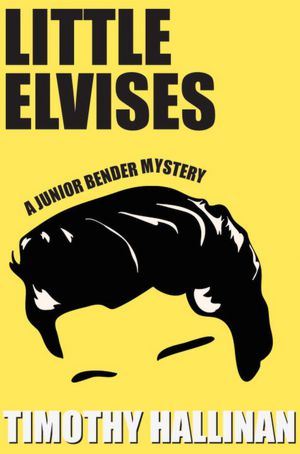 Junior Bender, a gumshoe with real voice, takes on music and mob in his second outing.
Junior Bender, a gumshoe with real voice, takes on music and mob in his second outing.
 During a tense scene of
During a tense scene of 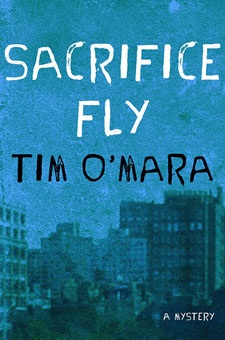 In
In  A British reality show star becomes an emotional terrorist to all who come within her orbit in
A British reality show star becomes an emotional terrorist to all who come within her orbit in  The unsung heroes of our society are the ordinary women with neither style nor beauty who take up the slack every single day...
The unsung heroes of our society are the ordinary women with neither style nor beauty who take up the slack every single day...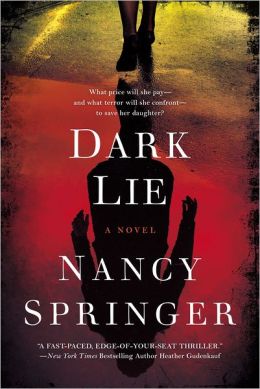
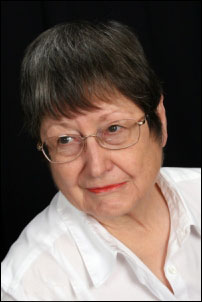 Any reader or writer of cozy mysteries knows that even fictionally killing a furry animal is an absolute taboo.
Any reader or writer of cozy mysteries knows that even fictionally killing a furry animal is an absolute taboo.
 Those of us who work for
Those of us who work for 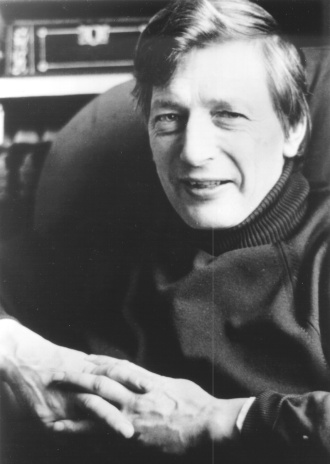 H.R.F. Keating considers the extraordinary imagination of Peter Dickinson
H.R.F. Keating considers the extraordinary imagination of Peter Dickinson Another brief example is his 1968 debut, The Glass-Sided Ants’ Nest (which originally had to be called Skin Deep in England because an old wiseacre at his publisher said books with insects in the title never did well) had murder among a primitive New Guinea tribe who had come to inhabit—guess where—the attics of a row of London houses. The book won the Gold Dagger for that year. As did, in the next year—a feat not yet surpassed—his mystery called, in England, punningly, A Pride of Heroes, and in the US The Old English Peep Show (because a smart New York publisher didn’t get that pun?).
Another brief example is his 1968 debut, The Glass-Sided Ants’ Nest (which originally had to be called Skin Deep in England because an old wiseacre at his publisher said books with insects in the title never did well) had murder among a primitive New Guinea tribe who had come to inhabit—guess where—the attics of a row of London houses. The book won the Gold Dagger for that year. As did, in the next year—a feat not yet surpassed—his mystery called, in England, punningly, A Pride of Heroes, and in the US The Old English Peep Show (because a smart New York publisher didn’t get that pun?). It is a taste British readers, doubtless, find easier to acquire than American ones, who are perhaps baffled by that rule-bound code of good manners added to by the habit of peppering speech with the odd Latin tag. But sip at the edges of this almost fairy-tale way of life, and there is to be found sweetness beyond even roly-poly pudding.
It is a taste British readers, doubtless, find easier to acquire than American ones, who are perhaps baffled by that rule-bound code of good manners added to by the habit of peppering speech with the odd Latin tag. But sip at the edges of this almost fairy-tale way of life, and there is to be found sweetness beyond even roly-poly pudding.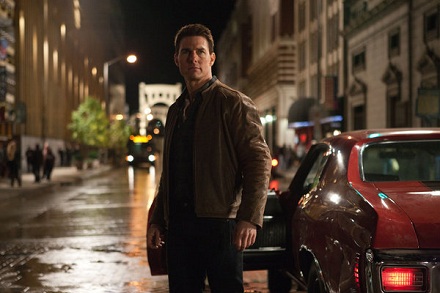
 It’s Cruise himself, and the script.
It’s Cruise himself, and the script.  Cruise is playing dress up; he is saying the right things and trying to act like the hero. But it is difficult to buy him as Reacher, even in the scene where he is shirtless.
Cruise is playing dress up; he is saying the right things and trying to act like the hero. But it is difficult to buy him as Reacher, even in the scene where he is shirtless.  We’ve seen the car chases, the action clichés and we’ve heard the dialogue before, too, though snatches of it are quite clever. And I do want to give mad props to one car chase that doesn't appear to use any computer graphics.
We’ve seen the car chases, the action clichés and we’ve heard the dialogue before, too, though snatches of it are quite clever. And I do want to give mad props to one car chase that doesn't appear to use any computer graphics.



 I have my favorites, of course. I have read To Kill a Mockingbird at least ten times, and Possession by A.S. Byatt will probably always reign as my choice of best novel ever written although In the Lake of the Woods by Tim O'Brien takes a close second to that. I have discovered writers whose work has taken my breath away—who can do otherwise but celebrate the discovery of Tana French, for example?—and I have lived in the descriptive elegance of people who have been writing for years.
I have my favorites, of course. I have read To Kill a Mockingbird at least ten times, and Possession by A.S. Byatt will probably always reign as my choice of best novel ever written although In the Lake of the Woods by Tim O'Brien takes a close second to that. I have discovered writers whose work has taken my breath away—who can do otherwise but celebrate the discovery of Tana French, for example?—and I have lived in the descriptive elegance of people who have been writing for years.
 Although he enjoyed a long and successful career culminating in a popular TV series based on his thoughtful Superintendent Wycliffe novels, W.J. Burley has attracted surprisingly little critical attention. Here are some reasons to seek out his work.
Although he enjoyed a long and successful career culminating in a popular TV series based on his thoughtful Superintendent Wycliffe novels, W.J. Burley has attracted surprisingly little critical attention. Here are some reasons to seek out his work. Like many teachers, he was meticulous in his habits. When he bought a book for his personal library, he not only wrote his name inside it, but also recorded the date of acquisition. Such attention to detail is an excellent qualification for an author of tightly plotted traditional mysteries. Burley went further by compiling “plot books” with plans for his stories. These make fascinating reading and extracts can be seen on the website, which also contains informative material about Burley’s unfinished work—he remained a committed writer up to the very end of his life.
Like many teachers, he was meticulous in his habits. When he bought a book for his personal library, he not only wrote his name inside it, but also recorded the date of acquisition. Such attention to detail is an excellent qualification for an author of tightly plotted traditional mysteries. Burley went further by compiling “plot books” with plans for his stories. These make fascinating reading and extracts can be seen on the website, which also contains informative material about Burley’s unfinished work—he remained a committed writer up to the very end of his life. Burley summed up his work thus:
Burley summed up his work thus: Inevitably, Burley’s bleak yet clear-eyed perspective of human nature does not always make for comfortable, light entertainment. Wycliffe is nothing like Marlowe, Wimsey, or even Inspector Morse. He is a pragmatist first and foremost—and all the more credible a human being for it. We are told in Wycliffe and the Cycle of Death (1990) that the detective “believed the criminal law should aim at damage limitation rather than at some abstraction called justice.”
Inevitably, Burley’s bleak yet clear-eyed perspective of human nature does not always make for comfortable, light entertainment. Wycliffe is nothing like Marlowe, Wimsey, or even Inspector Morse. He is a pragmatist first and foremost—and all the more credible a human being for it. We are told in Wycliffe and the Cycle of Death (1990) that the detective “believed the criminal law should aim at damage limitation rather than at some abstraction called justice.”
